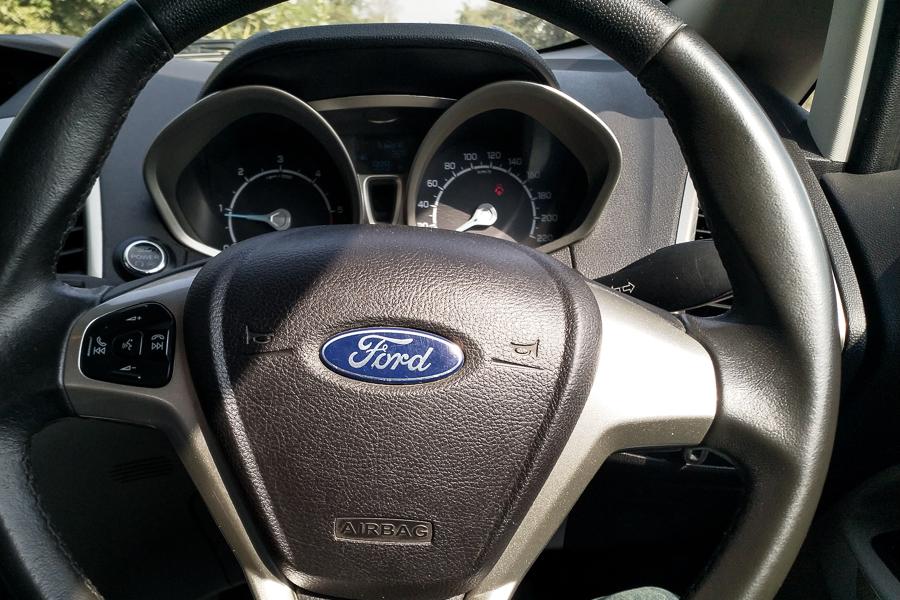Elephants cannot dance: A Tale of Two Fords
The automobile giant has reinvented itself to gain profits and maintain growth in the US, but it could not recreate that magic in India. Ford’s lumbering size and a stolid local connect ruined the party
The stylish Ford emblem, famously believed to be Henry Ford’s signature, embedded into the oval in blue and white beams with grace. The blue stands for trust, the white depicts the impeccable reputation that the brand enjoys. The oval represents a “hallmark for reliability”. Modernised with a silver lining on its 100th Anniversary in 2003, it is considered one of the most successful logos in the world.
The iconic Blue Oval has effaced a century of ups and downs and stood with elegance over years of unprecedented performance, unflinching courage and an unparalleled legacy. Ford stands for dependability and endurance. For generations of B-school graduates, Ford became synonymous with management lexicon—assembly lines, division of labour, mass production and vertical integration. As a pioneer, Ford depicts the dawn of modern industrialisation. Henry Ford became the curator of the ‘democratise the automobile’ vision. The Lincoln Continental, SVT-Raptor, Thunderbird, F-100 and The Mustang remain insignias of corporate excellence.
Ford’s Model T is said to have ushered in the automobile revolution. The car became the subject of songs and films. Built in 1908, Model T was conceived as a practical and affordable transport for the common man. More than 15 million Model Ts were sold.
An early Model T
The pandemic and an upheaval
When the pandemic struck, Ford found itself in a different playing field—manufacturing ventilators—a move that marked a historic redeployment of its resources and capabilities. What started primarily as a consequence of a global health crisis and less as a matter of choice, became Ford’s new business model. In October 2020, Ford announced leadership changes to turn around automotive operations and reconfigure its organisational design.
Car manufacturing is typically a lengthy, drawn-out process. The new strategy ushered in a change of pace for Ford where speed was the essence. This was Ford’s ‘future of work’ moment. The structural revamp marked a stark deviation from the 20th-century monolithic hierarchical design, so characteristic of the Fordian textbook archetype. Teams were regrouped in a hybrid environment. Ford adopted a de-densification strategy, which required replacing designated work stations with flexible collaboration spaces. This was not just about layout reassembly, it predicated a behavioural and cultural shift.
Ford’s hierarchy made way for a more agile structure. Ford’s story is a lesson in ‘phoenix rising from the ashes’. Faltering for years, Ford Motor started showing signs of revival. In the first quarter of 2021, the company reported $3.3 billion in profit, the most it had made in a quarter in ten years. Its share price rallied, jumping more than 70 percent. In July, Ford boosted its 2021 profit forecast after reporting impressive results. Ford faces plenty of challenges, but there’s a lot more confidence now. The company is “spring-loaded for growth”.
Ford’s global success and the great Indian debacle
While the global outlook for Ford looks promising, there’s another story happening 7,000 miles away from Michigan, its headquarters. With close to $2 billion accumulated losses, Ford India shuts shop, leaving employees, dealers and customers in the lurch. It’s a tale of two different Fords.
Ford began production in India in 1926. but the initial company was liquidated in 1953 as a result of severe import restrictions. Ford re-entered the Indian market in 1995 with a joint venture with Mahindra & Mahindra. Later, Ford increased its stake to 72 percent in 1998 and renamed the company Ford India Private Limited. It launched an impressive lineup of cars and models in India. Over the years, Ford had invested billions of US dollars to set up manufacturing facilities and its network of service centres across India. These facilities not only produced vehicles for the domestic market, but for various export markets.
Ford’s announcement to stop making cars in India and only sell through the import route made it clear that it won’t be in the driver’s seat anymore. Though it created ripples, it didn’t come as a surprise for industry veterans who felt that Ford lacked a bond with the Indian customers. “Ford couldn’t read the Indian market” and that “it looked at the Indian market through the US prism”, claim auto experts.
India is still a market for affordable cars with low operating costs. The global leaders don’t have models that fit into that scaffolding. Ford could never threaten the dominance of Maruti’s small car prowess, for instance. Ford is an illustration of the ‘elephants cannot dance’ syndrome, a victim of its lumbering size and a stolid local connect. The initial successes of Ford India have dwindled. Ford is an example of how things can go horribly wrong for big players.
The global manufacturing giants had long looked at India as a lucrative market. They had been enticed by the country’s cheap labour and promises by the government to make the playing field business-friendly. The New York Times cites that the government has struggled to remove barriers and provide a robust ecosystem. Industry commentators ponder why India is becoming a graveyard for the world’s auto giants.
The economy is shaken by the pandemic. Demand for new vehicles has weakened and automakers are grappling with supply-chain challenges. The Indian car market is no longer as promising. Despite aggressive efforts, Ford couldn’t gain a foothold in the market. A brand known for making dynamic, legendary machines suddenly ceases to exist.
In the early days, gasoline was fed to the engine and the reverse gear offered more power than the forward gears; the Model T therefore frequently had to be driven up a steep terrain backwards. Ford’s India story, in certain ways, becomes a metaphor for that.
The writer is Professor, Faculty of Management Studies & Research at Aligarh Muslim University.
The thoughts and opinions shared here are of the author.
Check out our end of season subscription discounts with a Moneycontrol pro subscription absolutely free. Use code EOSO2021. Click here for details.

